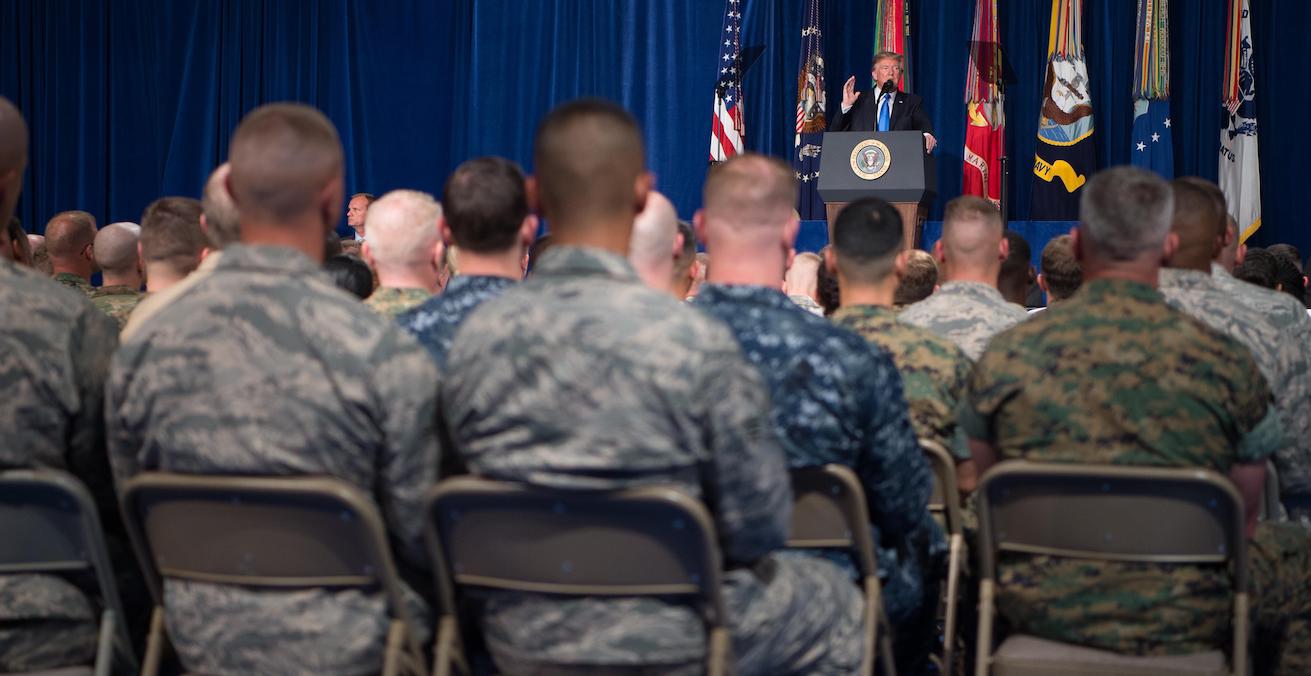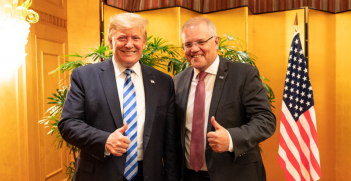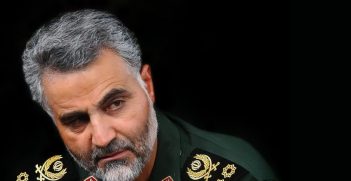Back to the Offensive: Trump’s New Direction in Afghanistan

Trump’s new strategy for “killing terrorists” in Afghanistan is a workable accommodation between the president’s frustration about progress and the military needs of his generals, but there will be challenges ahead.
President Trump announced his long-awaited new strategy for Afghanistan on 21 August during an address to soldiers at Fort Myer, outside Washington. The emphasis was on expanded combat operations to target terrorists who posed both a local and global threat, especially Islamic State (IS) and al-Qaeda, and to contain and roll back Taliban insurgents, while leaving open the door to reconciliation as part of the political process.
The strategy also included the expectation of the support and added commitment of troops and funding from NATO-plus allies, and the importance of Pakistan coming on board as part of the solution. Trump emphasised that Afghanistan would wear the largest burden, politically, economically and militarily, and its commitment to and delivery of real reforms, progress and outcomes was essential. Those Afghan deliverables are an interdependent part of the success of Trump’s strategy. Ensuing those deliverables may prove the greater challenge.
The strategy identifies three US “core interests” at stake, led by the need for a plan for victory and an exit strategy with an ‘honourable and enduring outcome’ that is worthy of lives sacrificed in the past by US forces since 2001 The second core interest is the unacceptability of the consequences of any hasty withdrawal by US forces due to the past experience that the terrorists, especially IS and al-Qaeda, were quick to fill and exploit the resultant vacuum. The third core interest is the need to solve the large and intricate problems of security threats posed by some 20 different proscribed terrorists groups in both Afghanistan and Pakistan. True to style, Trump said, “These problems will be solved. I’m a problem solver, and in the end, we will win.”
Trump also identified three core pillars underpinning the new strategy. The first is a shift from “arbitrary timetables” to a strategy guided by conditions on the ground. The second pillar is the integration of all instruments of power—diplomatic, economic and military—towards a successful outcome. Trump questioned whether reconciliation with the Taliban would ever come about, but pledged continuing support for the Afghan government and the Afghan military to “confront the Taliban in the field”. The third pillar is the importance for Pakistan to be part of the solution, not the problem.
On the first of the pillars, Trump was explicit about the intent to expand combat operations and empower field commanders accordingly: “we will expand authority for US forces to target terrorists and criminal networks that sow violence and chaos through Afghanistan…our troops will fight to win…we are killing terrorists” and “victory will have a clear definition: attacking our enemies, obliterating ISIS, crushing al-Qaeda and preventing the Taliban from taking over Afghanistan, and stopping mass terrorist attacks against America before they emerge”.
Trump also referred to asking NATO-plus allies (including Australia) and other global partners to share his new strategy, and contribute additional troops and funding “in line with our own”. Trump did not state how many additional US troops or funds he would commit, or his expectations from NATO-plus allies, but a figure of an additional 4,000 US forces (on top of the existing 8,400) is widely referred to in the US media. Nor did Trump clarify the likely composition of additional US forces or whether he expected NATO-plus contributors to commit to a return to offensive combat operations.
On the second pillar, Trump emphasised that the new strategy is not about “nation building”. He said the Afghans themselves were responsible for securing and building their own nation and defining their own future. Afghanistan would bear the heaviest burden, politically, economically and militarily. Trump emphasised that the US, NATO and others would assist Afghanistan, so long as “we see determination and progress”. It was up to the Afghans to deliver an enduring acceptable outcome based on “real reforms, real progress and real results”; the US “commitment is not unlimited and our support is not a blank cheque”.
Regarding the third pillar, Trump referred to the paradox of Pakistan being a valued partner on other issues, but concurrently harbouring, sheltering and providing safe havens to the same terrorists who lethally target US and allied forces and officials. Trump indicated the US-Pakistan partnership was at risk unless Pakistan demonstrated “its commitment to civilisation, order and to peace”.
This issue has been a thorn in the side of the US-Pakistan relationship, which the US has ramped up over the past year. Trump’s latest comments will be poorly received in Pakistan, and will aggravate the Pakistanis further because Trump concurrently spoke positively about the developing US-India strategic partnership and India’s contribution to stability in Afghanistan.
Overall, Trump’s new strategy will add to the effectiveness of counterterrorism operations, in a military sense, by US/NATO-plus forces and the Afghan National Defence and Security Forces (ANDSF). But this will take time, specifically some years, assuming the capability of the ANDSF can be developed as planned.
What Trump did touch on, but did not expand on, is that the exit strategy he seeks will depend on a successful political outcome that delivers security and stability in Afghanistan, necessarily inclusive of some form of reconciliation with the Taliban. Of the four elements of counterterrorism/counterinsurgency practice as applies in Afghanistan—clear, hold, build, sustain—the military have the lead on the first two, which are to create and maintain a stable environment that enables the government, through political, economic and social measures, to address and consolidate the latter two. All are interdependent. Unfortunately, to date, Afghanistan has under-performed when it comes to the ‘build’ measures.
Trump’s references in his second pillar above to the necessity of the Afghan government delivering on its part, is as much if not more about political as military-related deliverables. Ensuring the Afghans are able to deliver concurrently on their essential ‘build’ and ‘sustain’ obligations may prove the greater challenge.
Ian Dudgeon is a presidential associate of the Australian Institute of International Affairs (AIIA) and former president of the ACT Branch of the AIIA.
This article is published under a Creative Commons Licence and may be republished with attribution.





